Artist Vanessa Rolf creates striking monochromatic pieces using her intuitive selection of fabric and stitches to explore her favourite subjects; maps, journeys, memorials, inheritance and archives.
Vanessa uses a tactile approach of collecting, sorting and editing to refine her project ideas. This comes about as a result of her fascination with the processes of documenting and labelling to claim and filter objects and experiences. She incorporates a mixture of hand and machine stitch techniques, along with appliqué, printing and dyeing. Hand-stitch is a particular attraction, with its meditative and repetitive action, physically recording the time Vanessa invests in her work. She loves to make full use of the potential that stitching has to instinctively refine texture and design, by adjusting her stitching as she goes along.
Vanessa has recently showed her work in exhibitions including ‘Documentary Discourses’ at the University of the Creative Arts in Farnham, the Embroiderers Guild at Winchester Discovery Centre and ‘Making Common Ground’ in collaboration with Alice Kettle. She is exhibiting in the current 62 Group show ‘CTRL/Shift’ with tour venues including MAC Birmingham, the National Centre for Craft and Design in Sleaford and Scunthorpe Visual Arts Centre.
Alongside her work as an artist, Vanessa is a freelance educator, visiting lecturer and engagement consultant, teaching at Chelsea College of Art and Design, Winchester School of Art and the University of the Creative Arts, Farnham. She is currently Engagement Curator at John Hansard Gallery, Southampton, an Honorary Fellow of the Royal College of Art and a member of the 62 Group of Textile Artists.
In this interview we learn how Vanessa created her felt-based work ‘Absence of Matter’ stating with the initial germination of ideas in her mind, to her research process of collecting, sorting and playing with images and objects. We discover how she used her research to create and refine this strong graphic piece of work. You’ll be able to use this insight in your own project research or it might inspire you to try the technique of inlaid appliqué.
Name of piece: Absence of Matter
Year of piece: 2017
Techniques and materials used: Inlaid appliqué, material – wool felt
Size of piece: 50cm x 55cm
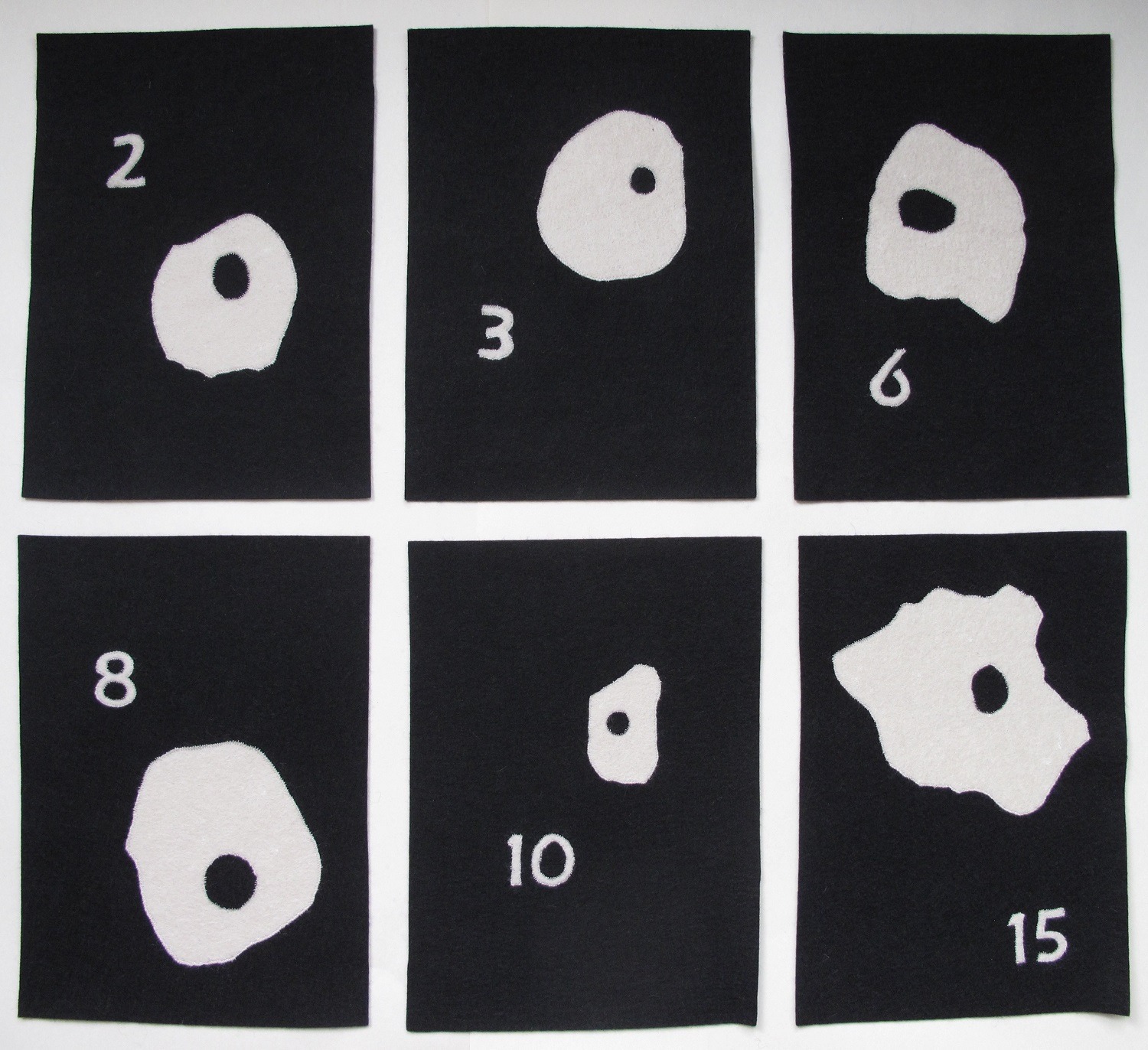
Inspiration from negative space
TextileArtist.org: How did the idea for the piece come about? What was your inspiration?
Vanessa Rolf: Memory, memorials and landscapes have been repeating themes for me over the years. I often use personal narratives to inform my practice but through research my works develop, drawing inspiration from broader influences.
My most recent work feels much more raw and direct, reflecting on loss, grief and unfamiliar landscapes, both internal and literal. My experiences translate into ideas for my work and I use my making to tell stories that I find hard to articulate into words.
I was invited to submit work for a 62 Group exhibition with the theme ‘Making Space’. The dictionary definition of ‘space’ is ‘an absence of matter’, which seemed to fit really well with the themes of loss that I was thinking about. I often find a project title useful. It creates boundaries and helps me to hone my thinking.
I began to explore how people, their possessions and the places they inhabit create shadows, traces or imprints beyond their own physical presence. I like to list words and make connections to art materials or processes. Printing, embossing, cyanotypes and rubbings all suggested something has been removed but left its mark.
I created inventories of possessions and explored ways of cataloguing and recording using cyanotypes and rubbings. I re-used half-filled diaries, sketches and notes to document ideas. Inherited collections of shells, stones and rocks, scale rules, compasses and maps began to develop into abstracted shapes and patterns.
I began playing with ideas of negative space, things with holes or gaps or where the object itself suggested a shape where there was an obvious absence. In boxes of adopted fossils and shells, I discovered hag stones, which had a naturally occurring hole through erosion and contact with water. These stones were thought to have talismanic properties in cultures across the world, protecting the owner from all kinds of ill fate.
I drew the stones and created templates from the shadows they created on the cyanotype. Deciding that the process of making should mirror the idea of absence and presence led me to explore the technique of inlaid appliqué; the fabric is removed and replaced by an identical shape to fill the void rather than overlaid. The appliqué image becomes integral to the cloth rather than sitting on the surface.
This series of works is still very much in progress and I have much to explore further. I am thinking about introducing some non-textile materials like plaster or metal, which I have not worked with before.
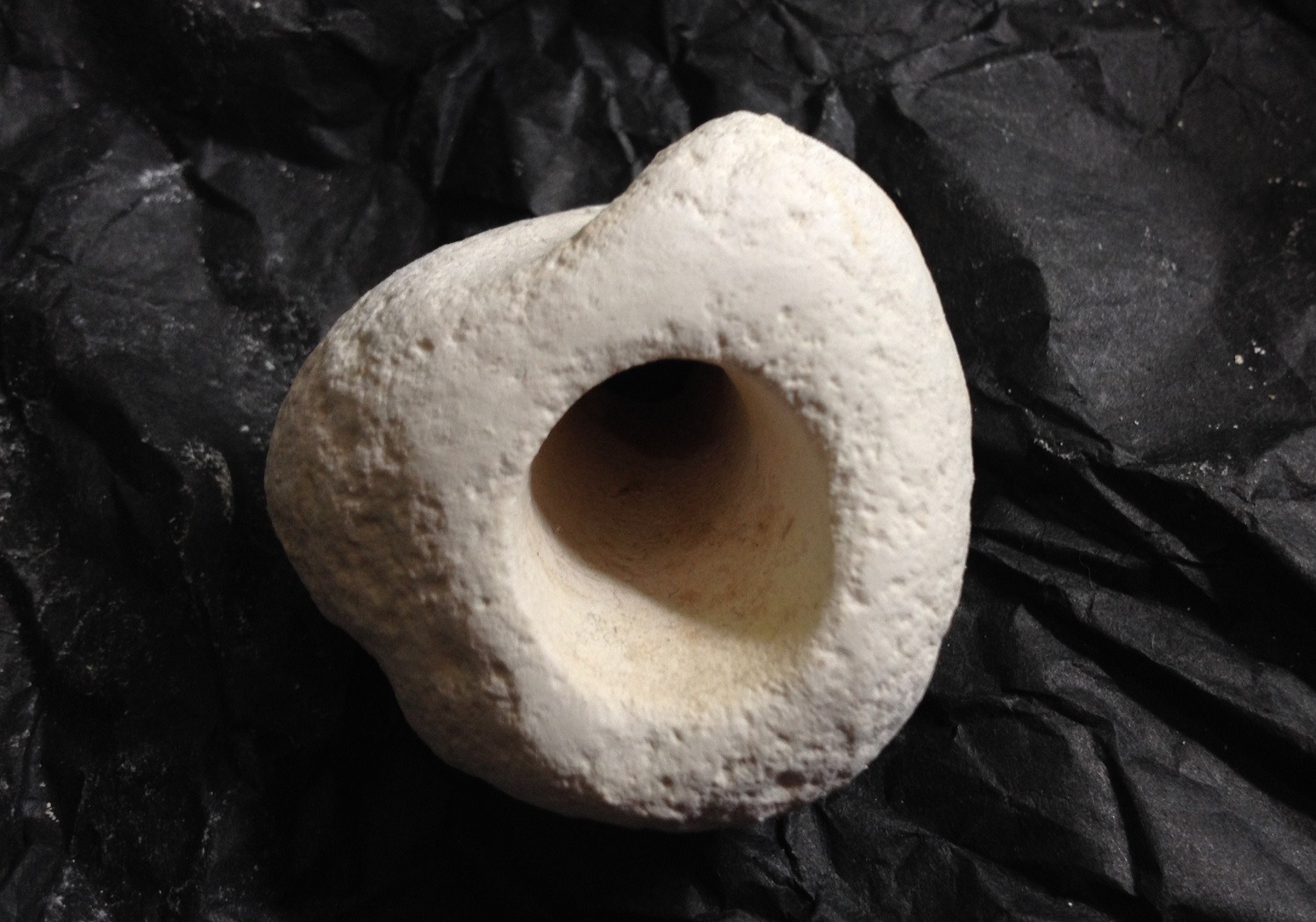
What research did you do before you started to make?
I always start my research by sifting existing piles of images, photographs, looking at work from other artists and at old unresolved work of my own. I look for anything that holds a colour, shape, texture or idea that feels connected to my brief. I am still referencing photocopies I made fifteen years ago in the library at the Royal College of Art.
I also collect images on Pinterest and from the internet, but I find these harder to incorporate. For me the physical sorting of images is essential. I have begun printing images but sometimes the low resolution is frustrating. Given more time I would visit the library and enjoy the decadence of colour photocopying!
Sorting, editing and collecting of reference material help to sow seeds of ideas in my head.
For this project, I began to make notes and scribbly drawings. I visited local museums to record how objects are archived, numbered and labelled. I ordered and re-ordered my research results until narratives began to shape.
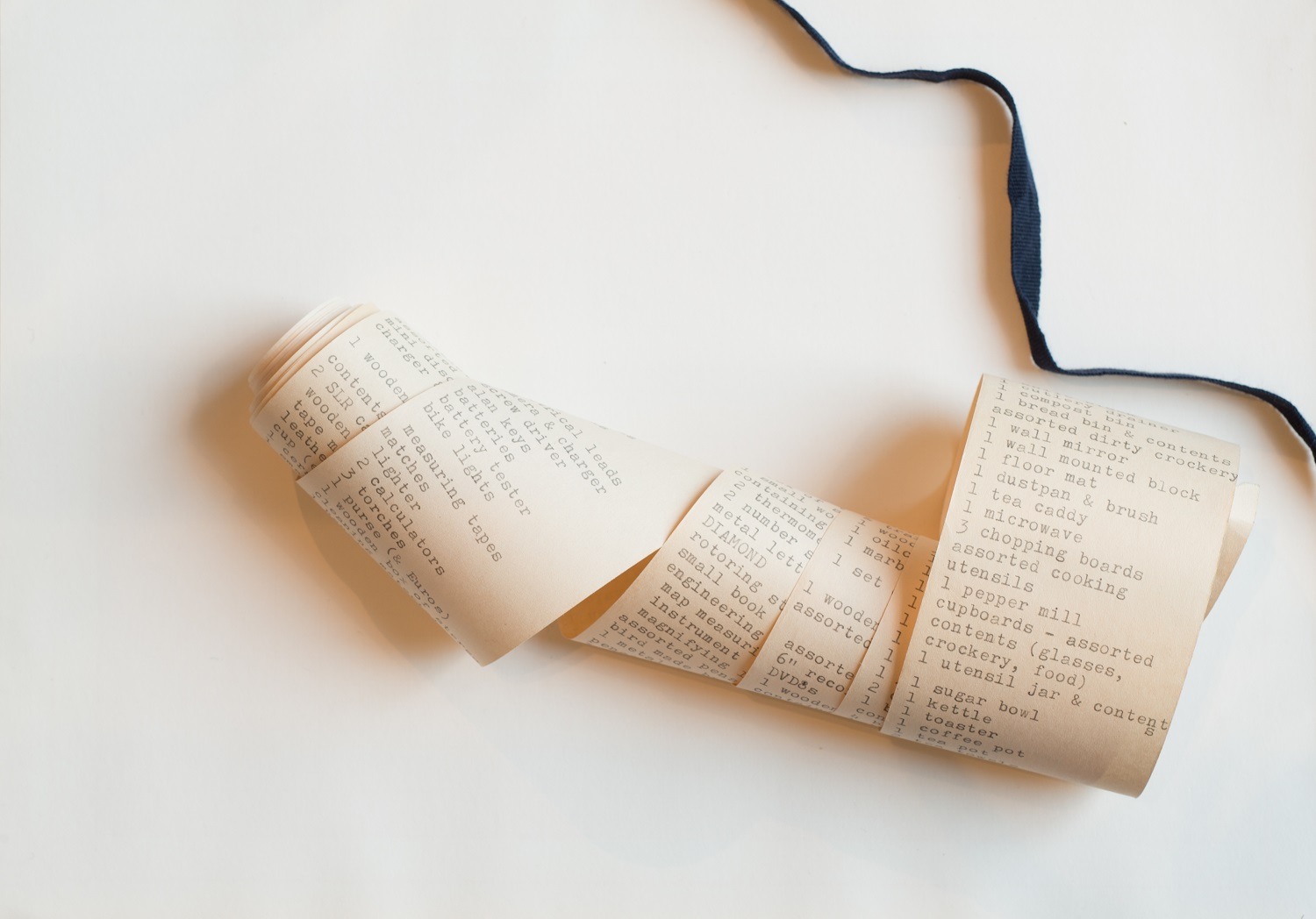
I have always found it hard to commit to a conventional sketchbook process. I like to pin up source materials all over the studio to direct my thinking as soon as I walk into the space. But over the last couple of years, my making space has been restricted several times while we renovate our house and sometimes I have been forced back into a sketchbook or a loose-leaf binder to collate my ideas.
I don’t work towards resolving an idea on paper first. I often just explore scale, compositions, colour choices, materials and processes directly in textiles.
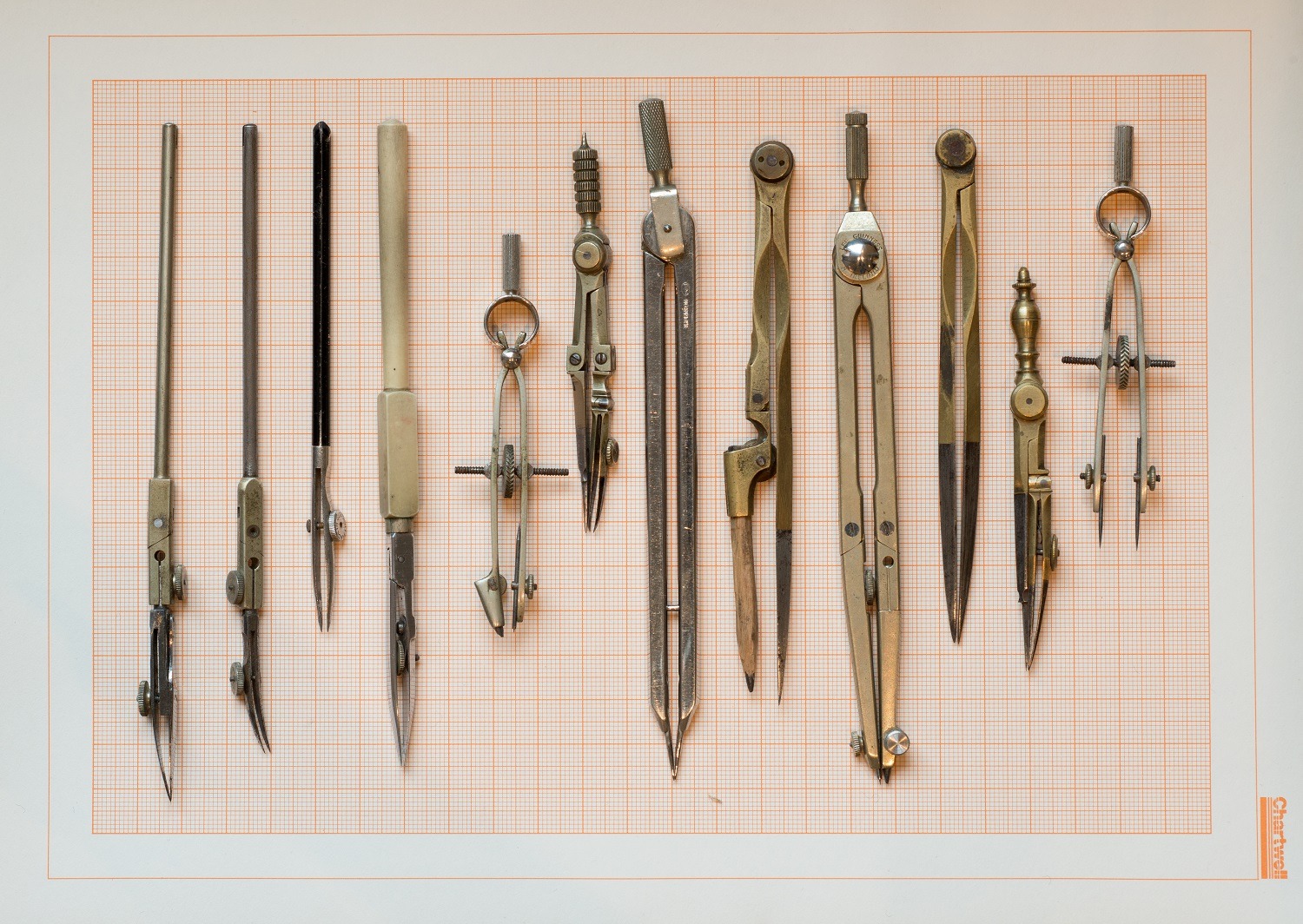
The making and stitching process gives me time and space to think and evolve my projects. Sometimes tests fail and are discarded, but other times they hold the right qualities and so they stay in the mix. A project is never really finished until I feel I have got those explored ideas out of my system.
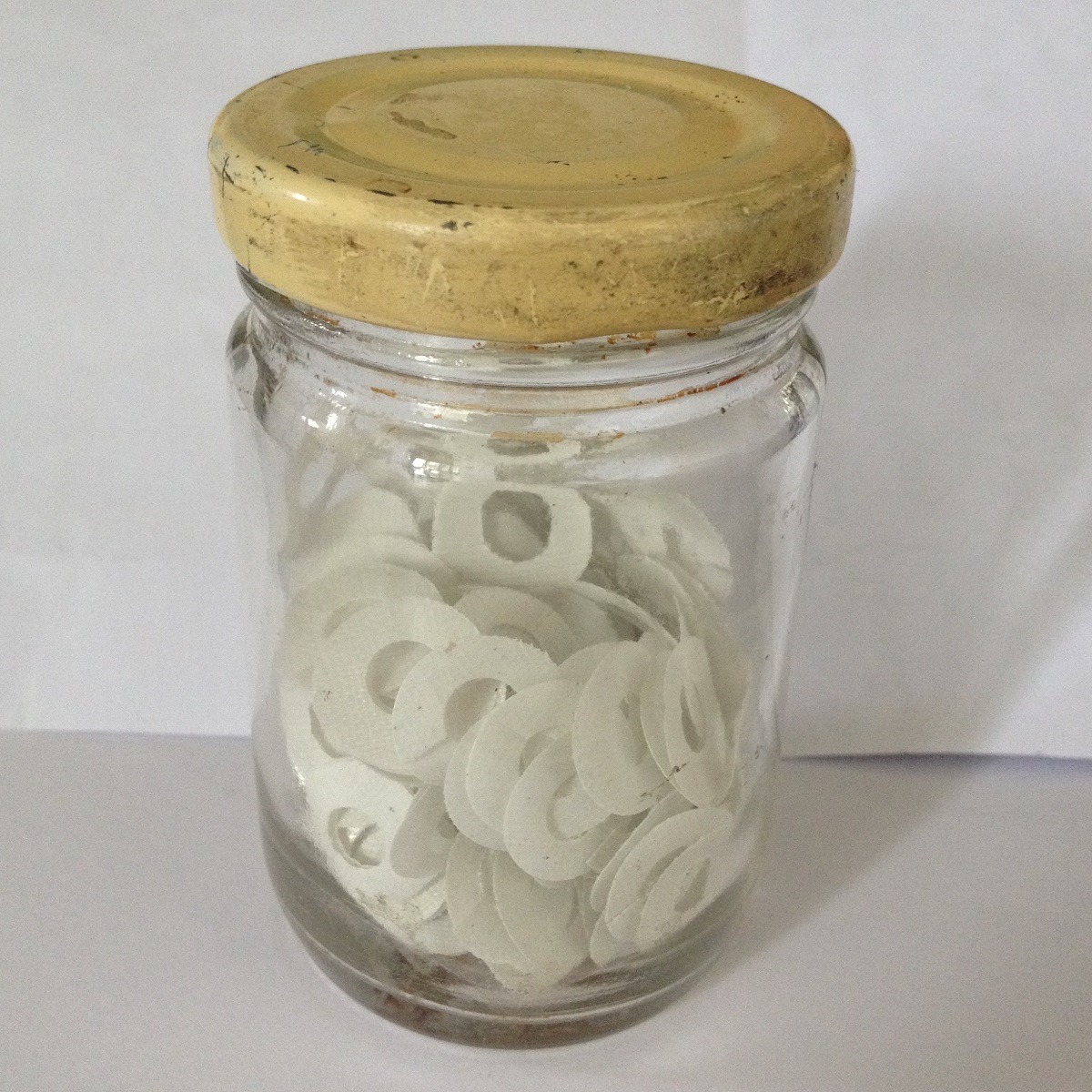
Ghostly blueprint experiments
Was there any other preparatory work?
I draw very little and usually make templates to enable me to work directly on the cloth, rather than for observation or as an outcome.
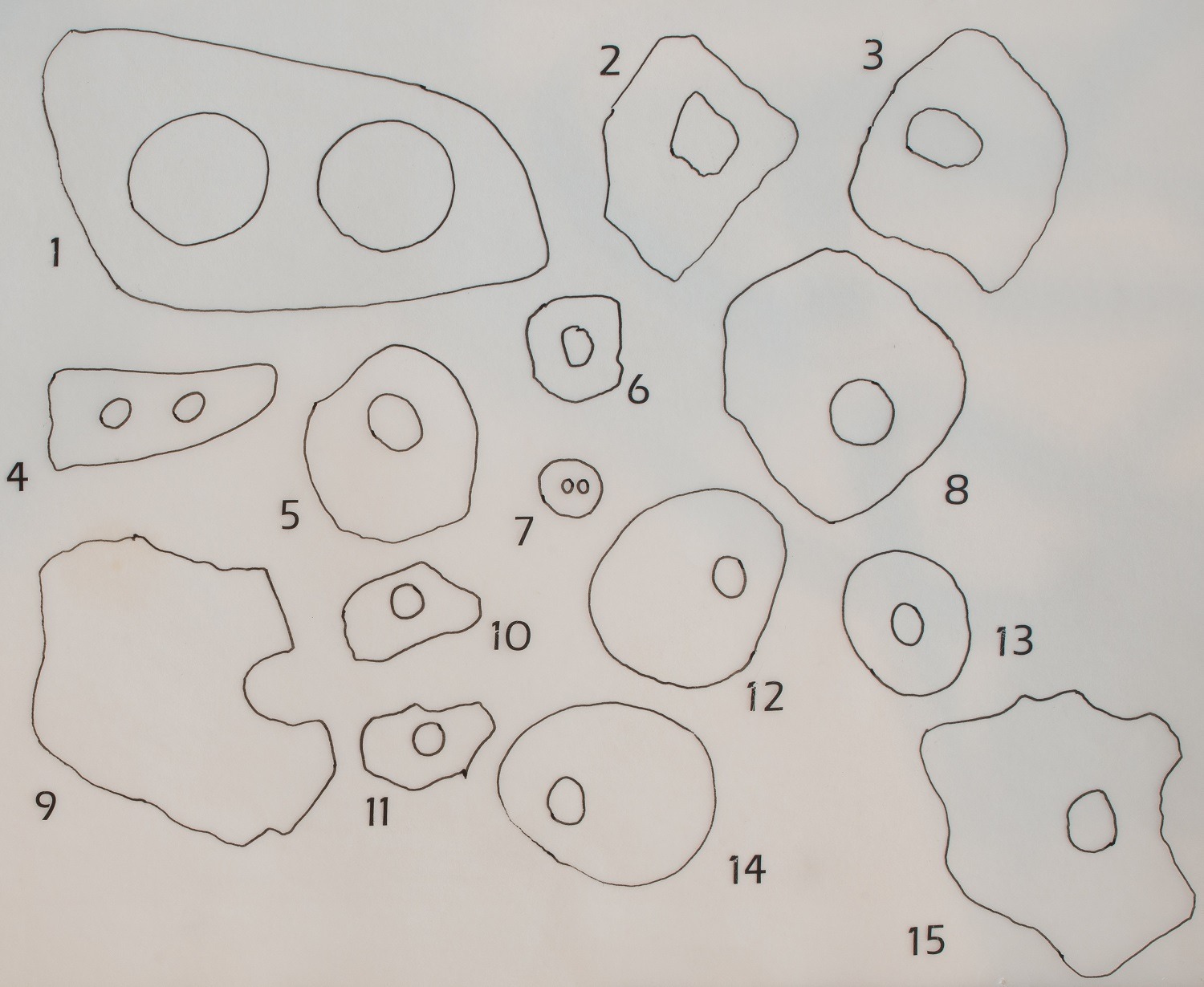
I used cyanotype for the first time and found it very appealing. Like drawing, there were choices about composition and subject matter but I enjoyed the instant nature of it and the removal of control.
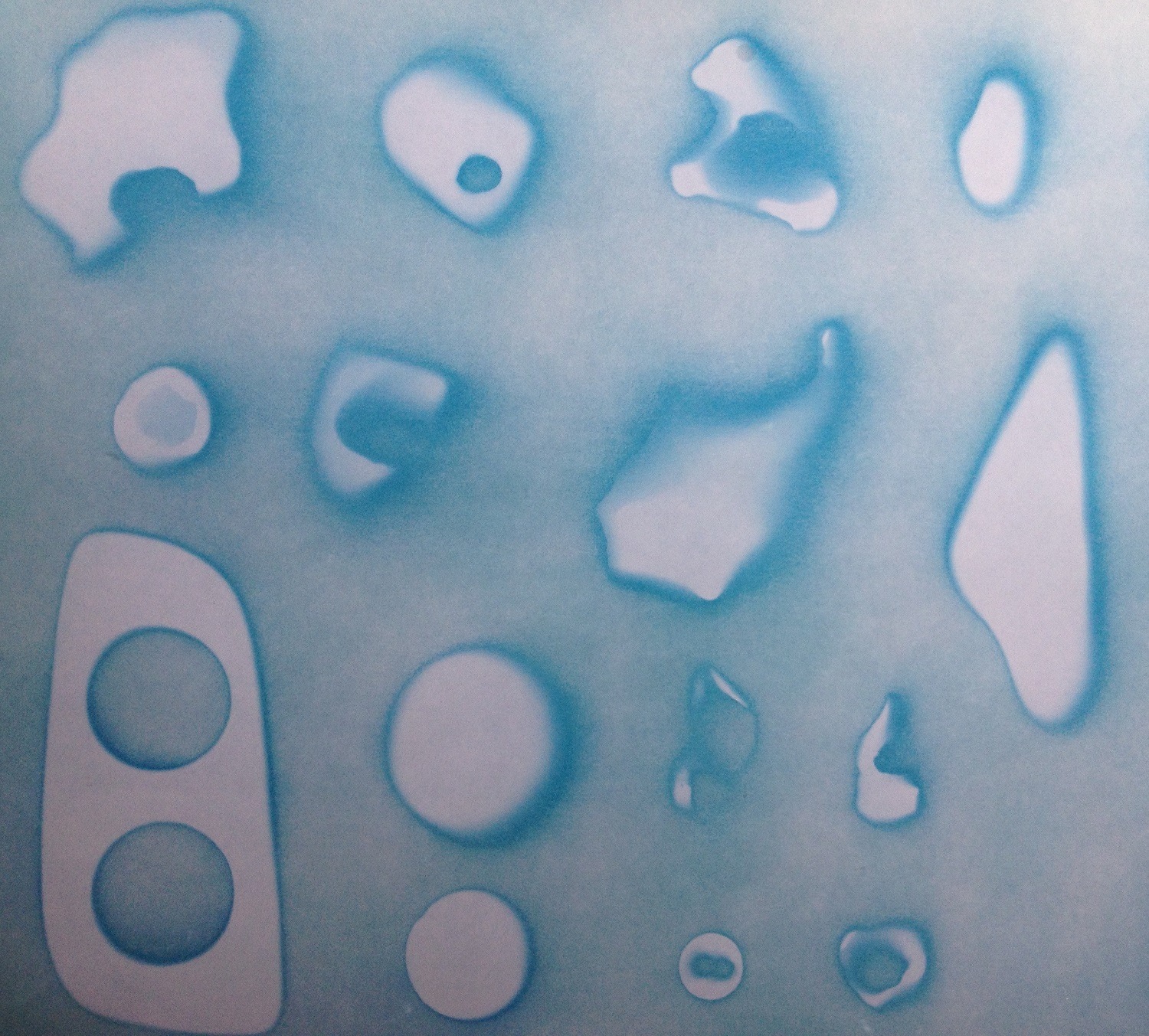
I also loved how shapes morph and are half-formed. Three dimension objects on the paper don’t create a sharp image. Instead, they gave a ghostly presence that fitted well with my ideas. The cyanotype process didn’t translate into my first series of outcomes in wool felt, but it is something I want to go back to.
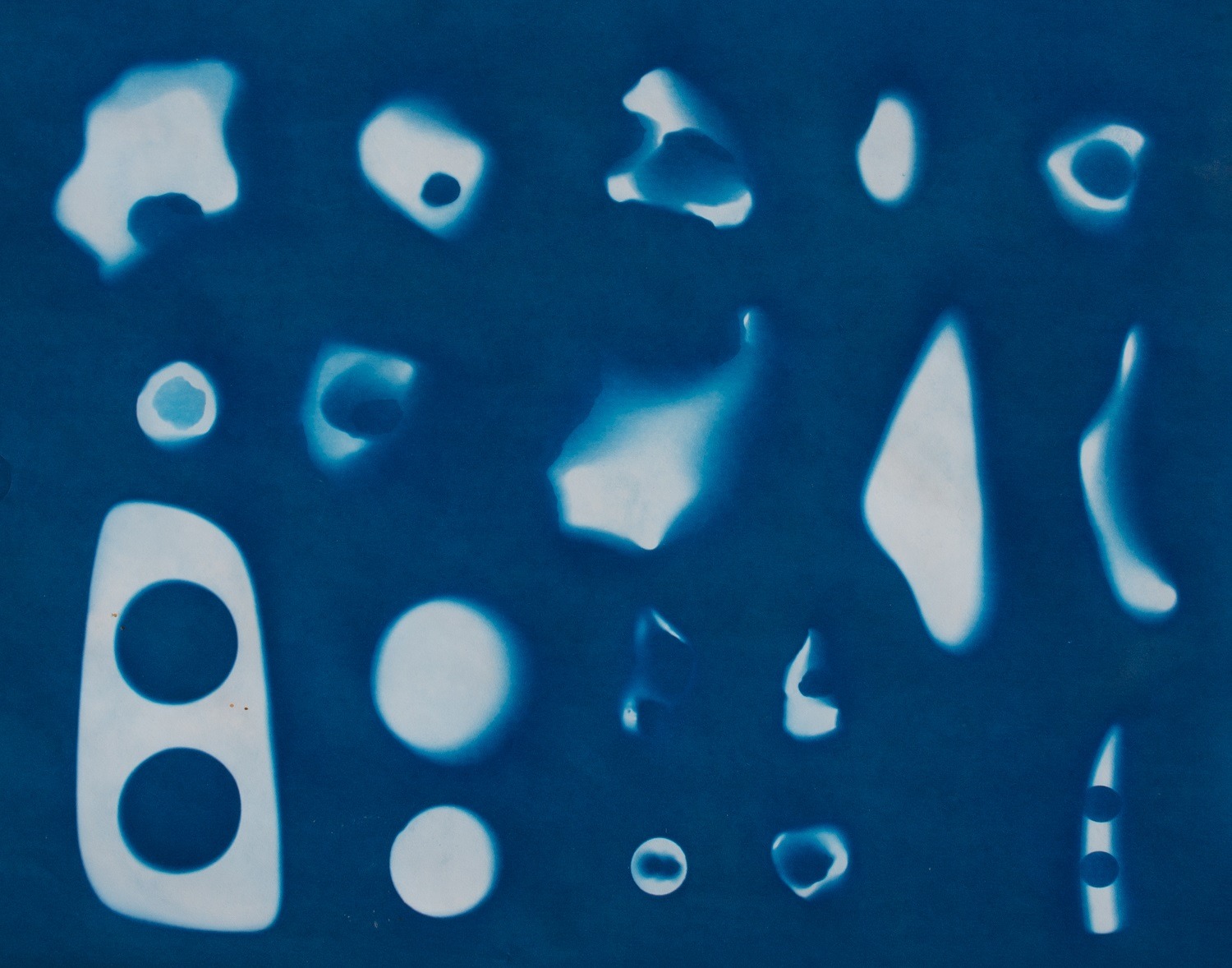
What materials were used in the creation of the piece? How did you select them? Where did you source them?
My work ‘Absence of Matter’ is made from wool felt.
The stash of fabric in my studio is always my first port of call when I am starting to think about translating ideas into cloth. I sort everything and pile up anything that feels like it is the right colour or the right quality for the project. I played around with a couple of possibilities but quite early on I rejected everything except the felt.
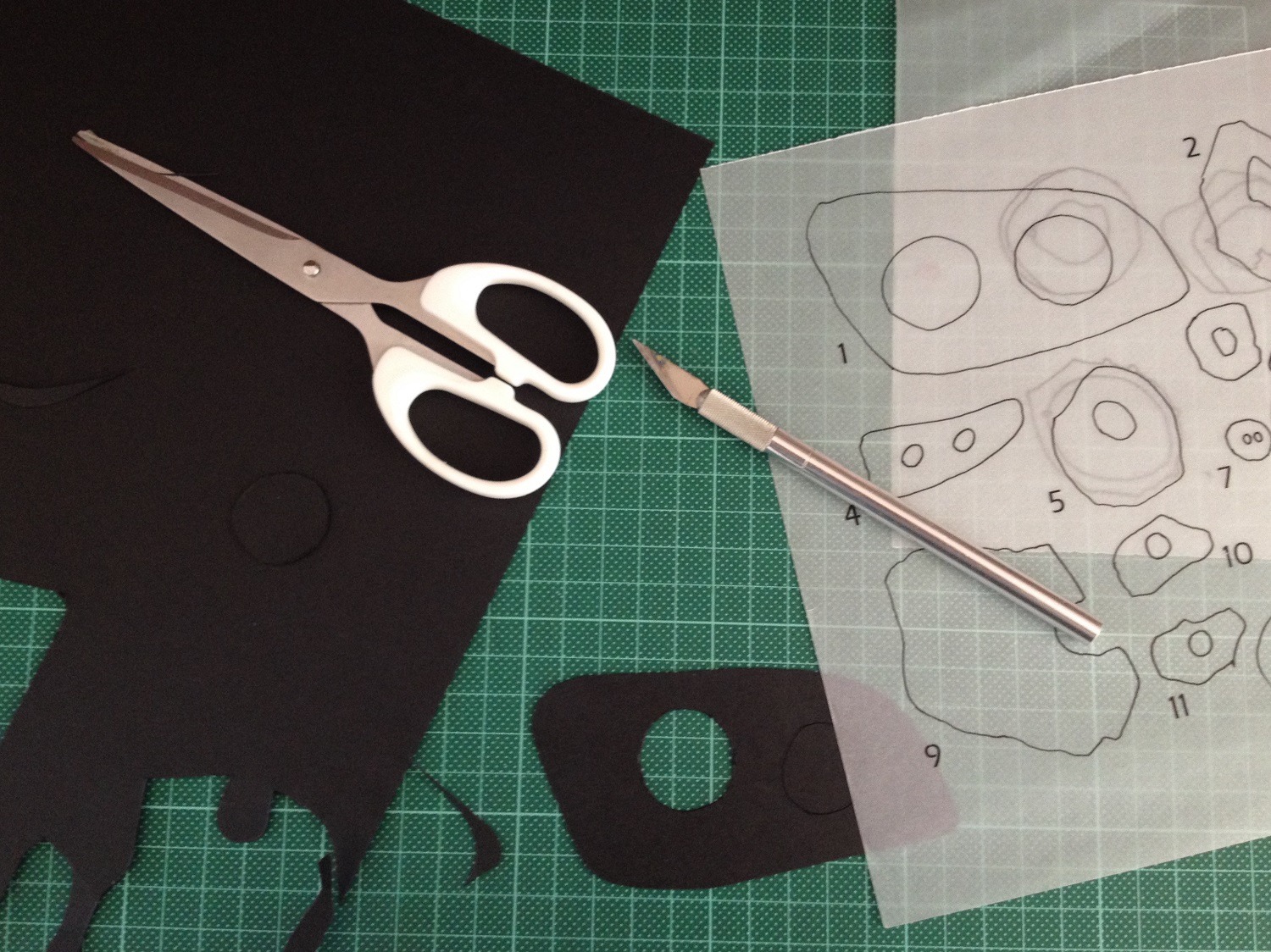
I often use found and repurposed fabrics. When I am buying new materials I love to visit the Cloth House on Berwick Street, London. Their choice and quality are always amazing and they source really unusual things too. I often buy small quantities and that is how I justify the price to myself!
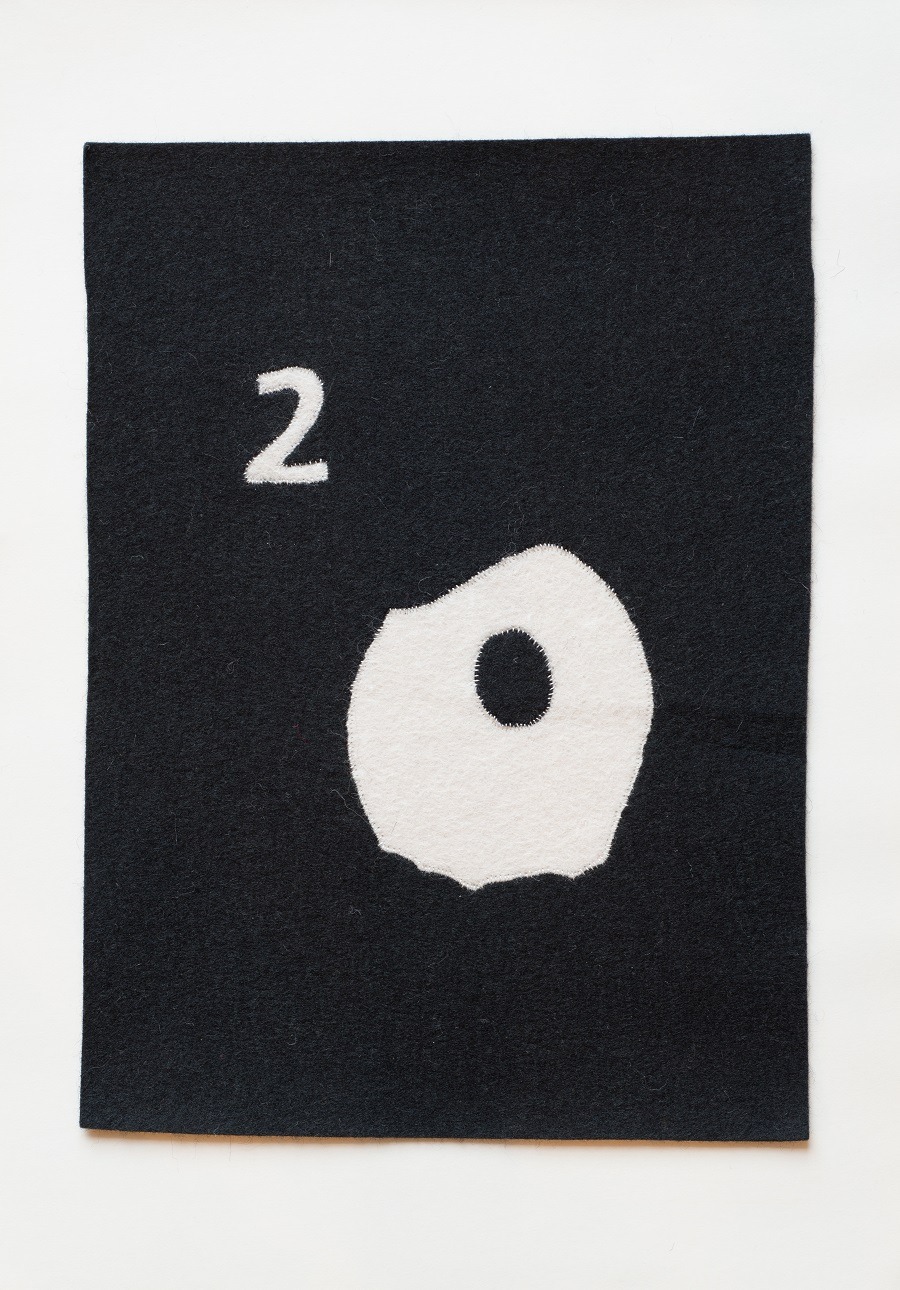
What equipment did you use in the creation of the piece and how was it used?
I mostly hand-stitch so the tools I use most often are very simple. For these works I used a rotary blade, quilting rule, cutting matt, white marking pencil, air erasable fabric pen, paper stencil, sharp scissors, needle, thread, dressmakers pins and an iron.
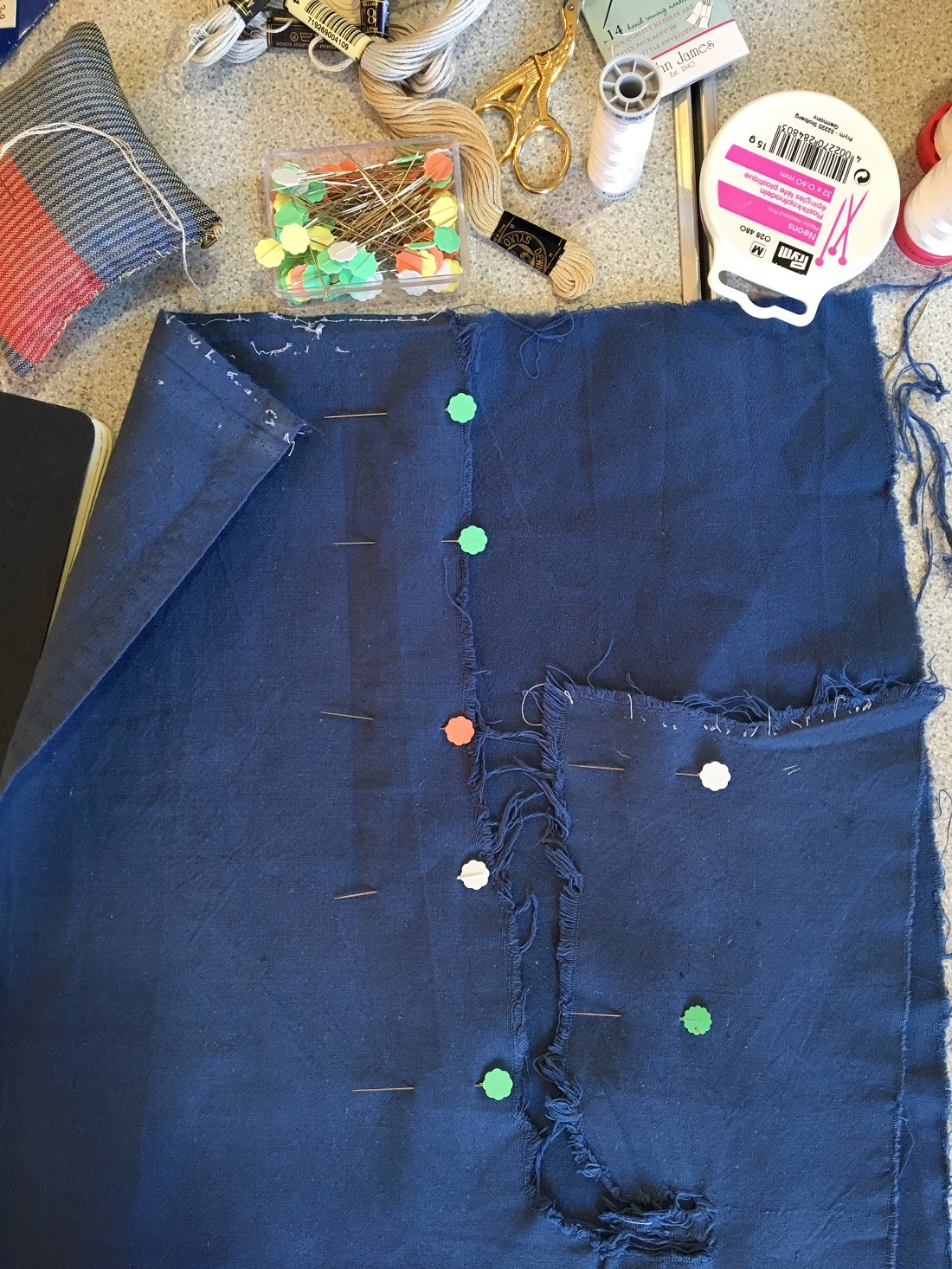
Slotting together pieces like a jigsaw
Take us through the creation of the piece stage by stage
This piece uses inlaid appliqué. The technique can result in a very graphic outcome as the felt has a sharp edge when it is cut. The fabric is quite malleable so even though the shapes are roughly cut by hand the act of stitching pulls them in, forming an exact fit.
I cut the felt into rectangles using the rotary cutting blade. The felt shows every cut when you cut it with scissors, even the angle of the blades, so for straight edges, I like to cut with the rotary cutter.
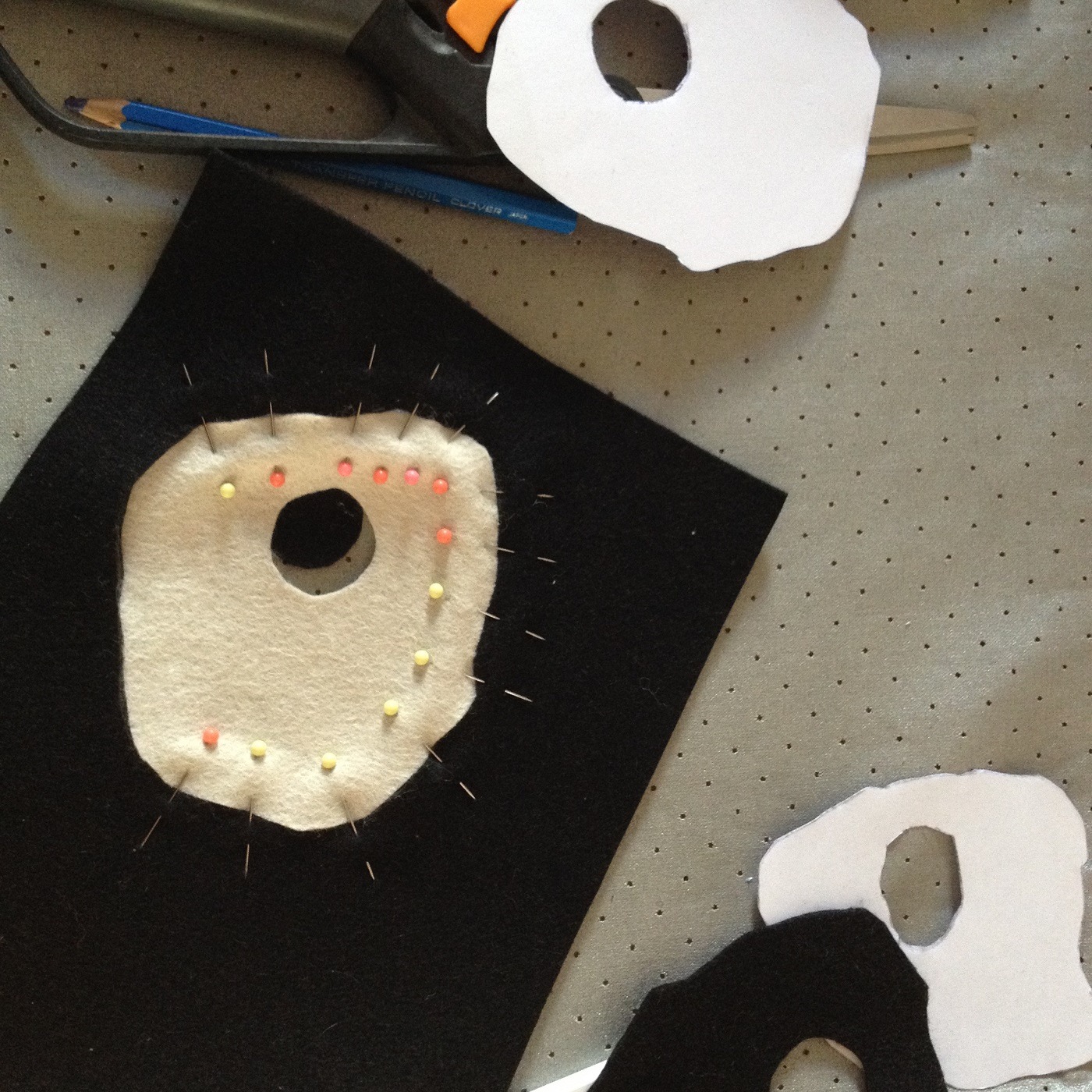
From the original drawing of the hag stones, which were numbered into some fictional cataloguing system, I made enlarged versions and cut them into paper templates. Then I used the air erasable pen to draw around the template on the cream felt. These positive shapes of cream felt were cut out using one of my most-used pieces of equipment, my sharp embroidery scissors. The pieces were arranged into a balanced composition and I made the negative hole shapes from the black felt, using the white chalk pencil to draw out the shapes. The shapes were slotted together and pinned in position.
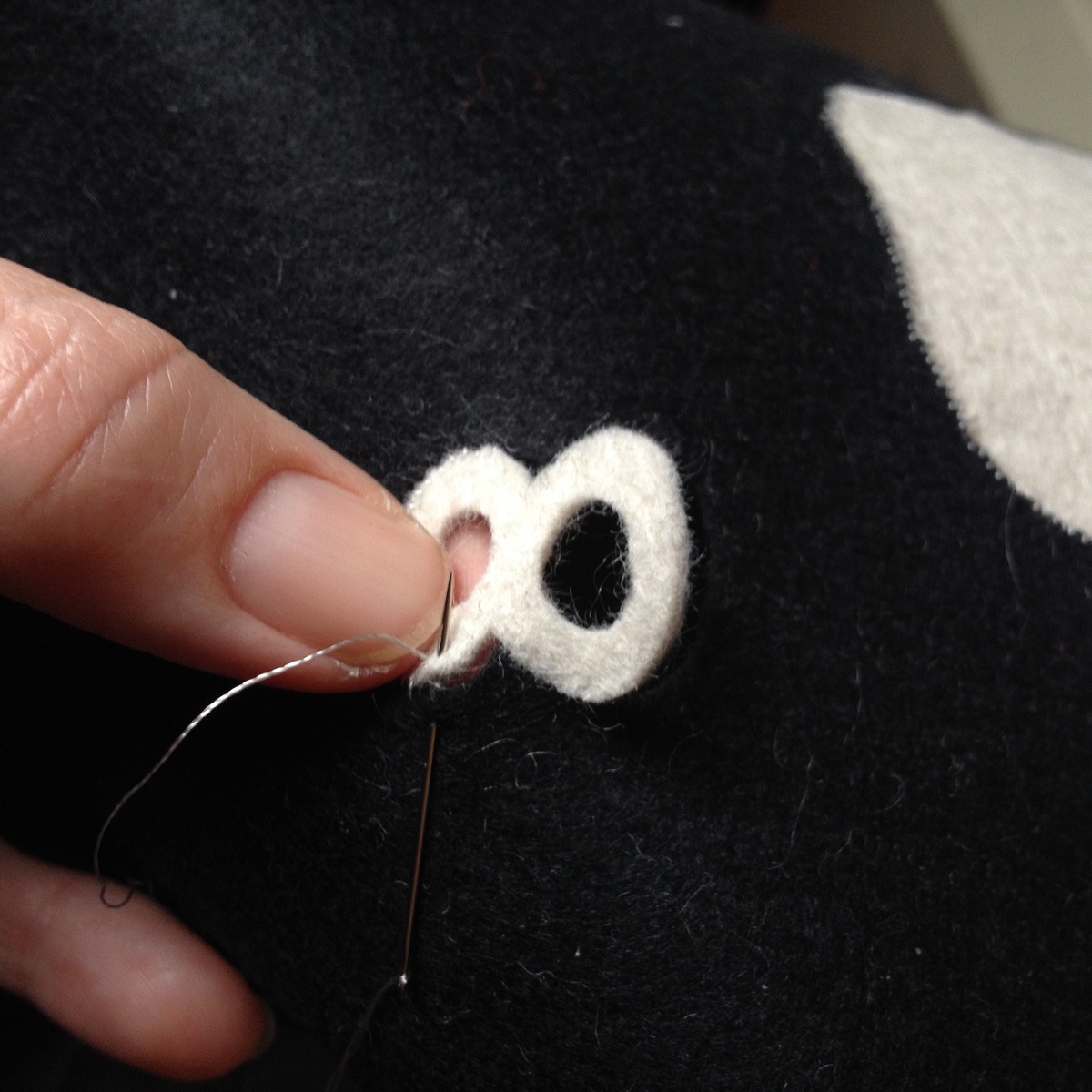
I initially stitched with black thread, but wasn’t satisfied with the effect so unpicked it and switched to a cream thread. The shape is eased to fill the space and the stitch draws the two fabrics together. The smaller internal shapes in the stones and the numbers were in-filled in this way.
I actually made several panels, but on completion, I thought that the size and number of shapes were too dense. I recut and stitched these panels again, refining the numbers.
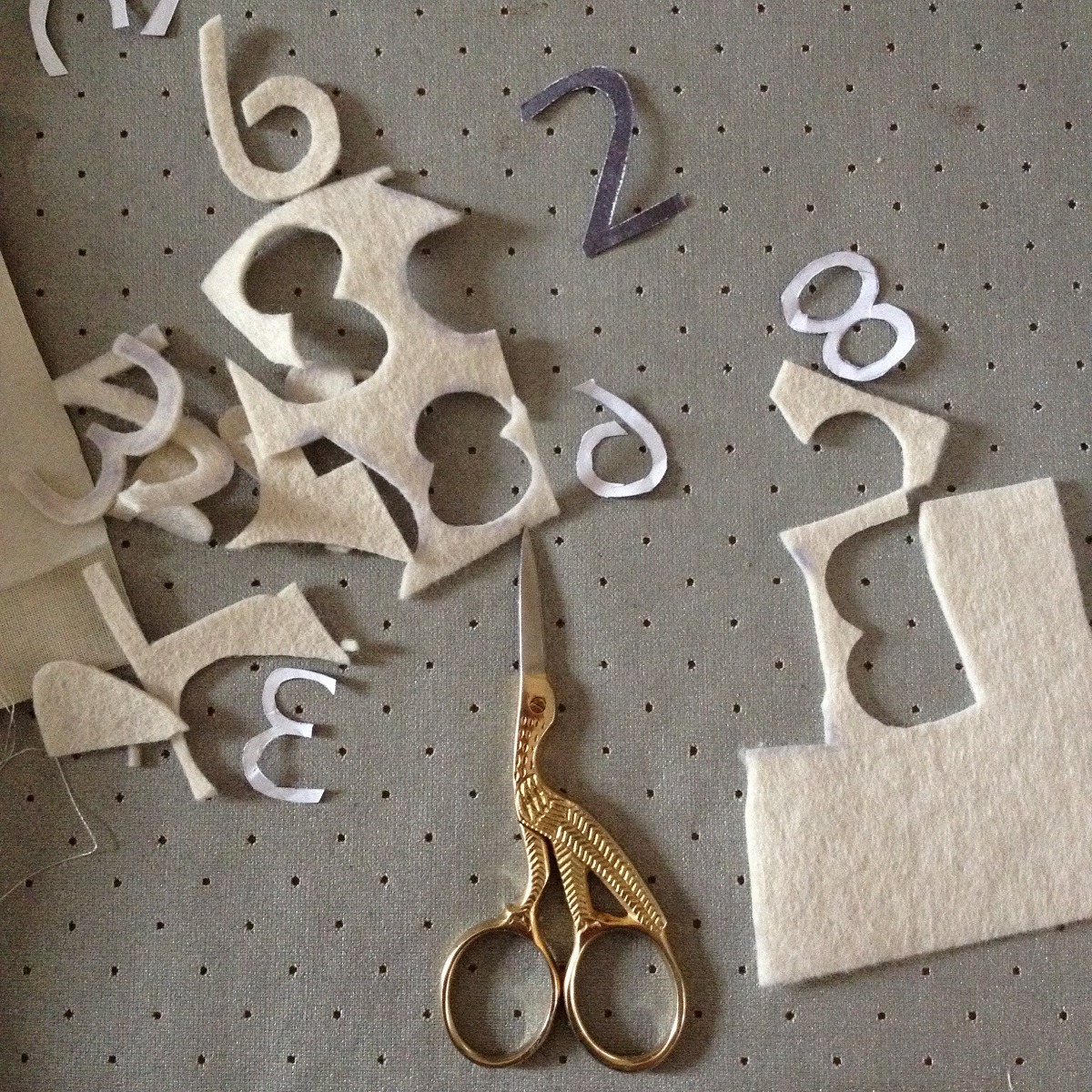
The pieces were pressed with a steam iron. The felt is malleable and forms to the way you hold it, so from the action of stitching the pieces are often quite deformed. Pressing the work with a steam iron creates a more graphic outcome. The stitch is harder to see and the flat colour of the shapes look almost screen-printed.
For me, this is the moment to judge whether I have achieved the effect I had been aiming for. I usually live with the work tacked up on the wall for a while to decide how I feel about it.
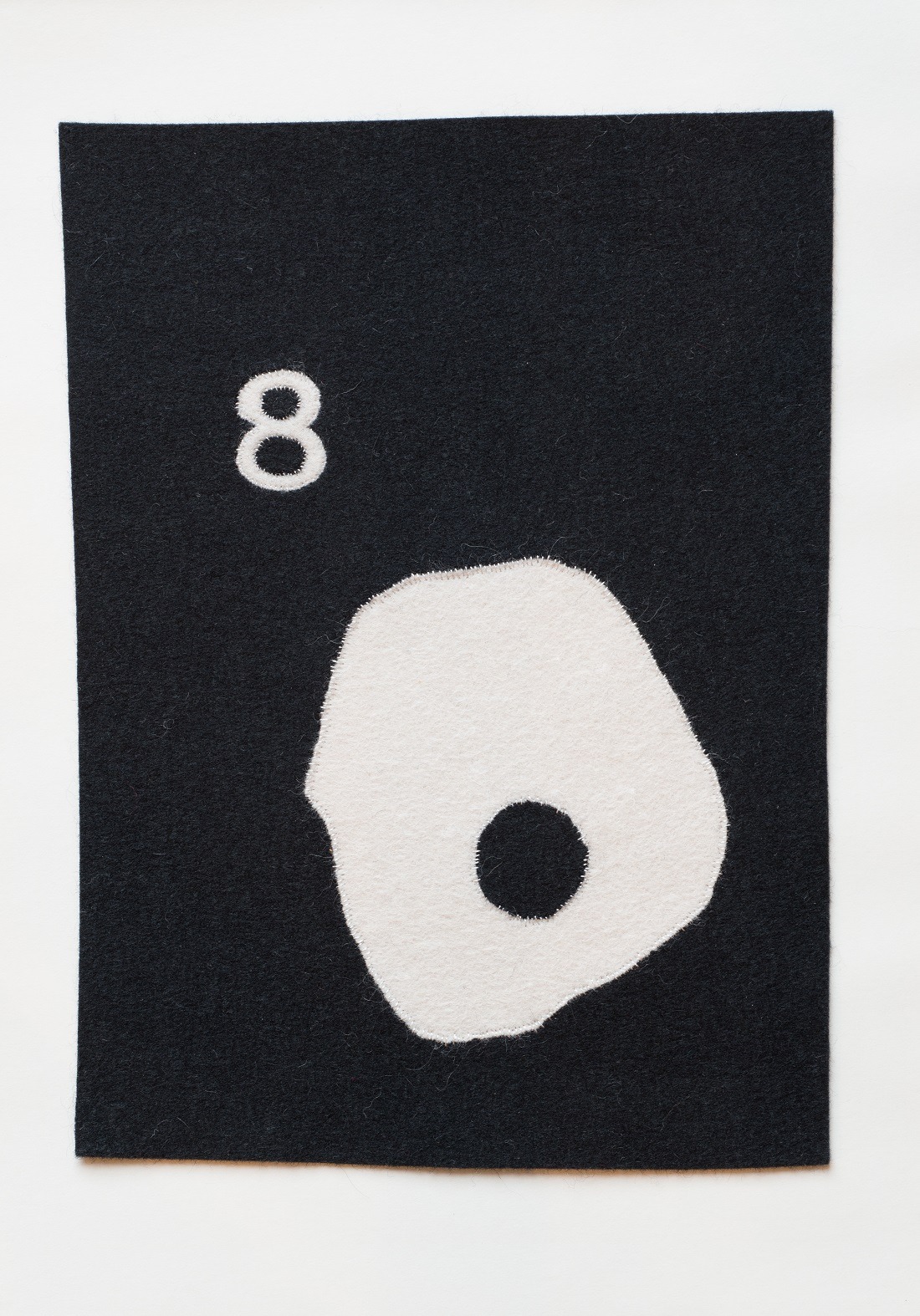
What journey has the piece been on since its creation?
This piece was my first piece selected for exhibition by the 62 Group. It was shown at the ‘Making Space’ exhibition at the Knitting and Stitching Show, Alexandra Palace, and the exhibition then went on to Edinburgh. It is currently part of a group show in Southampton. At some point, I would like to show it alongside the objects that inspired it.
I think there is a lot more to explore and this work feels like just the start of a much larger series.
For more information visit Vanessa Rolf’s website
Did you find Vanessa’s research and production process useful for your own work? Let us know what you think by leaving a comment below.
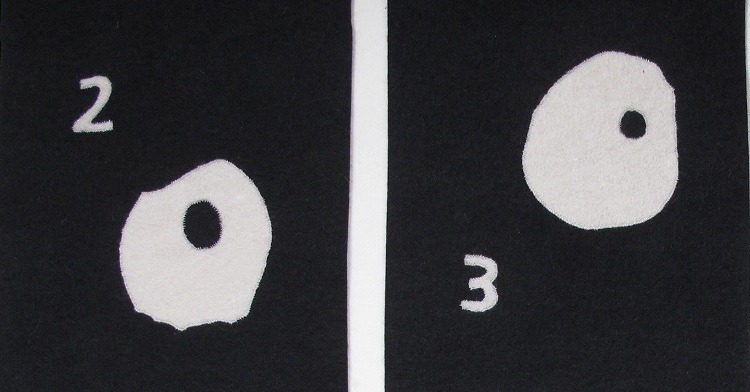
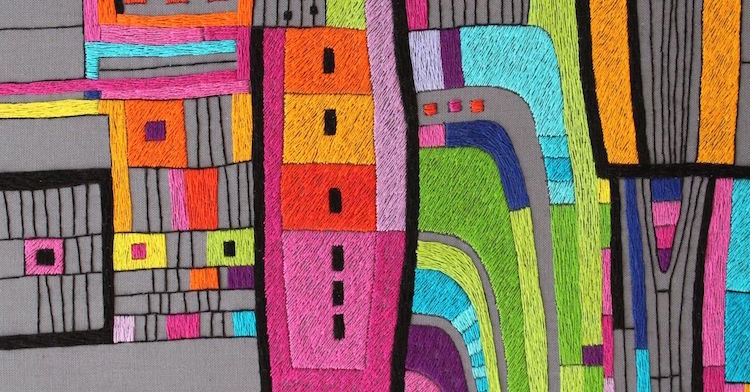
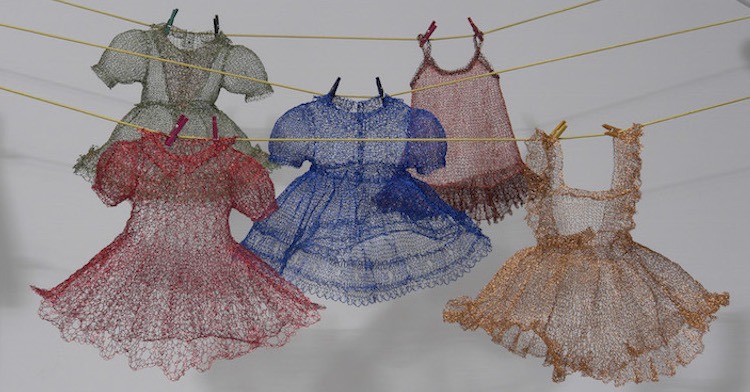
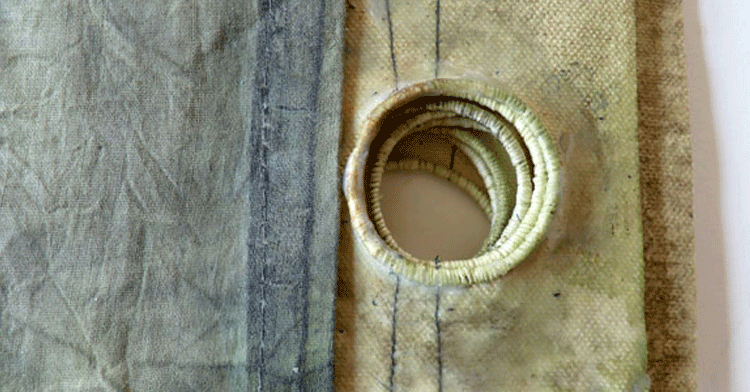
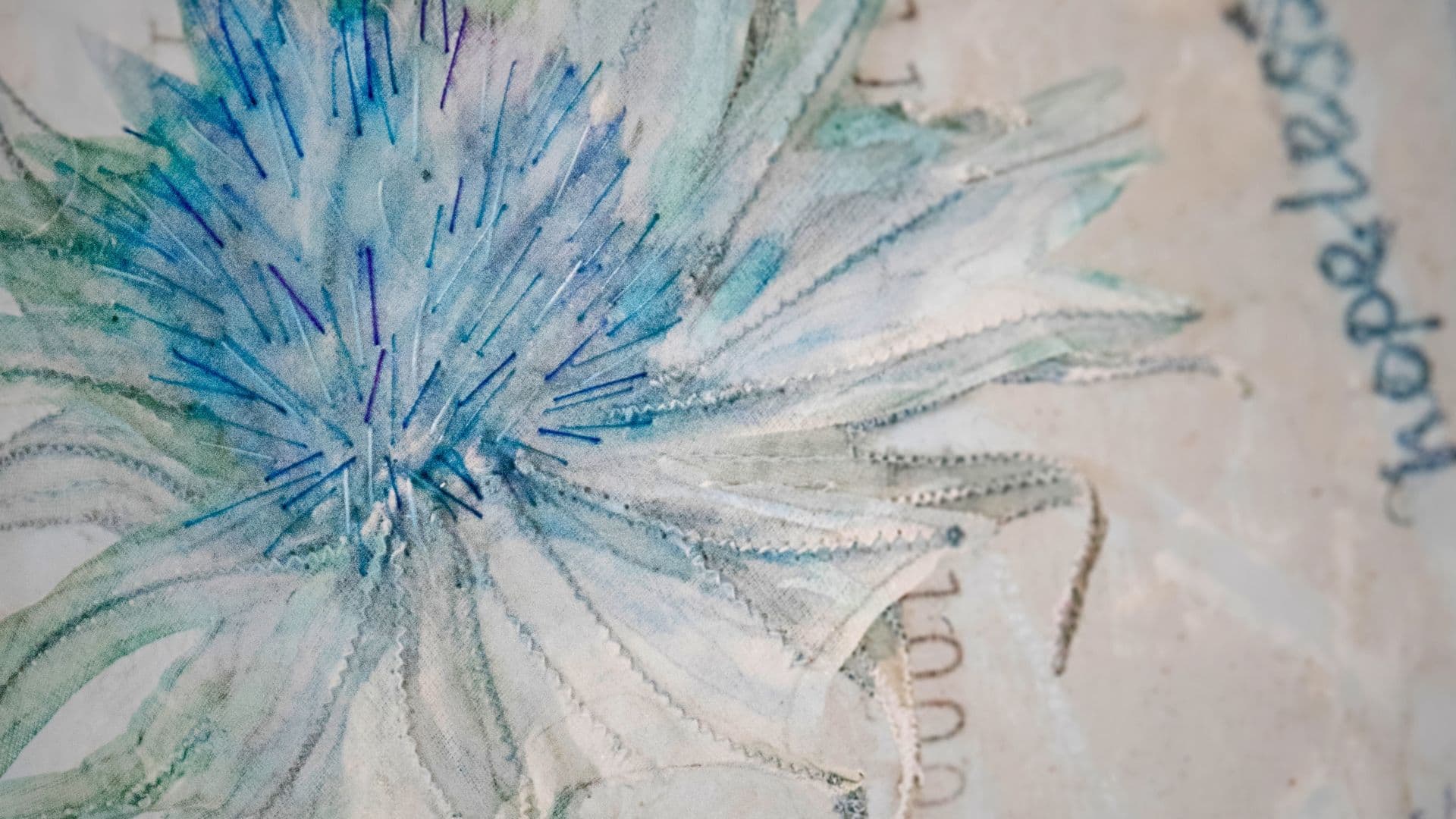
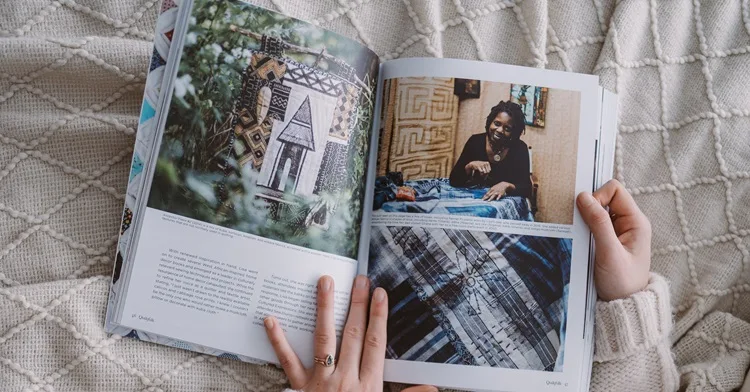
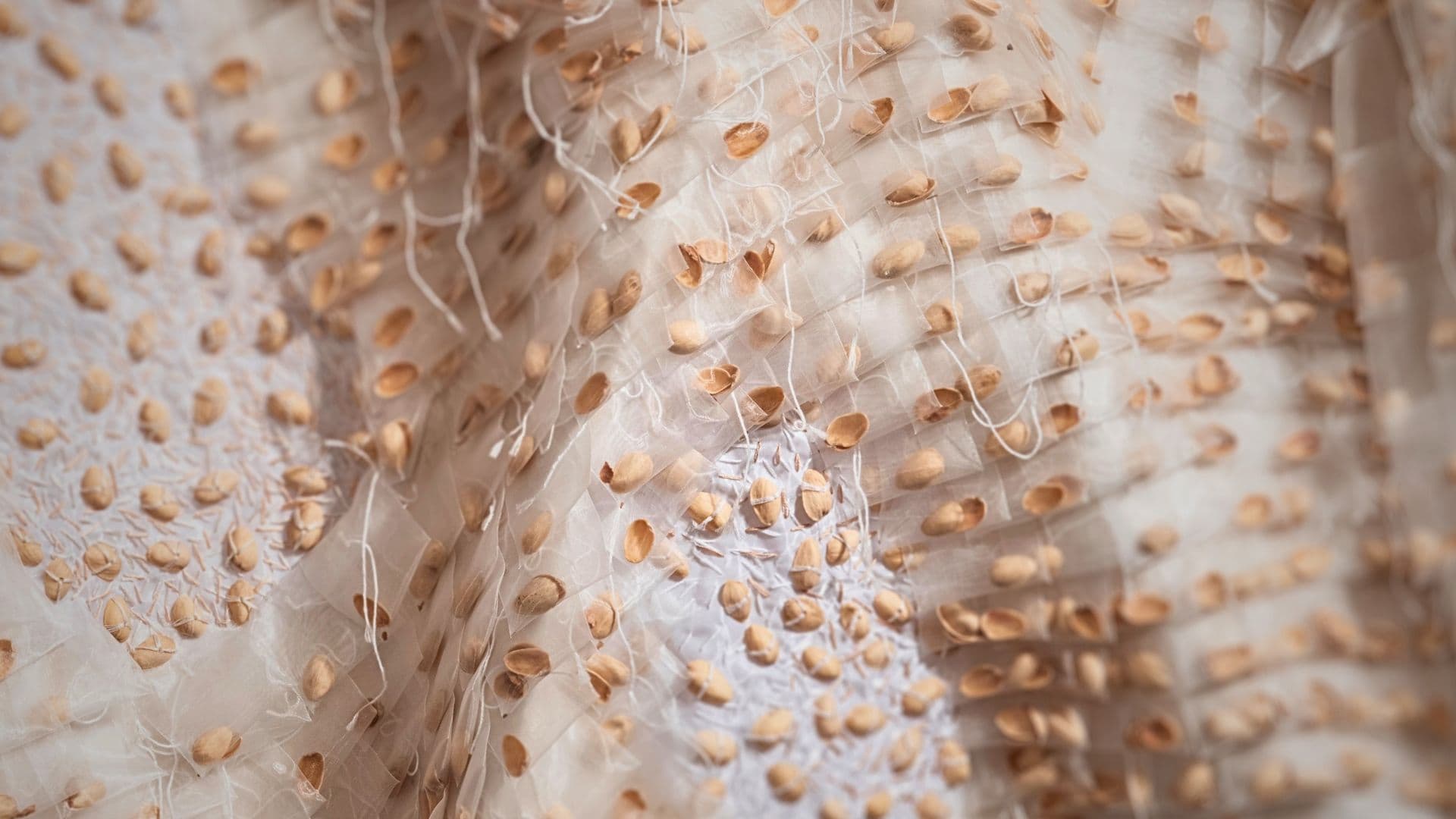
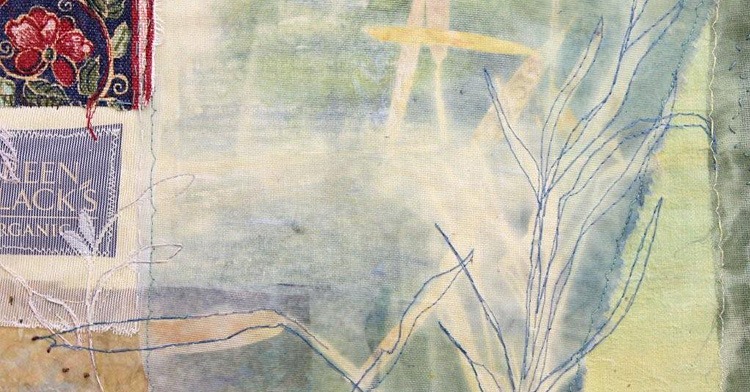
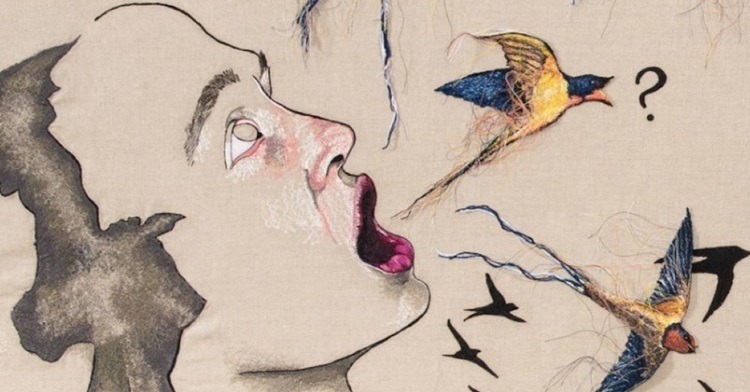
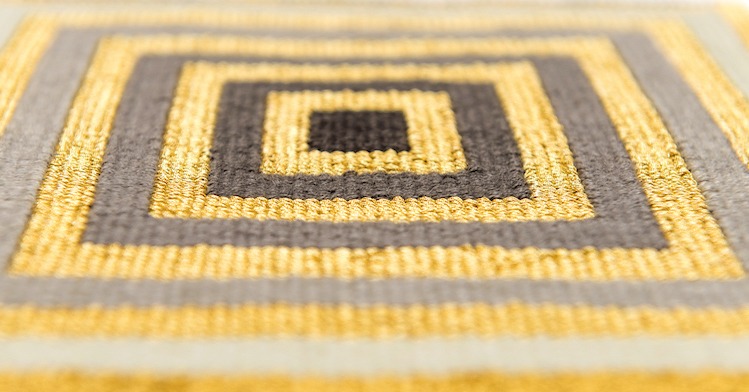
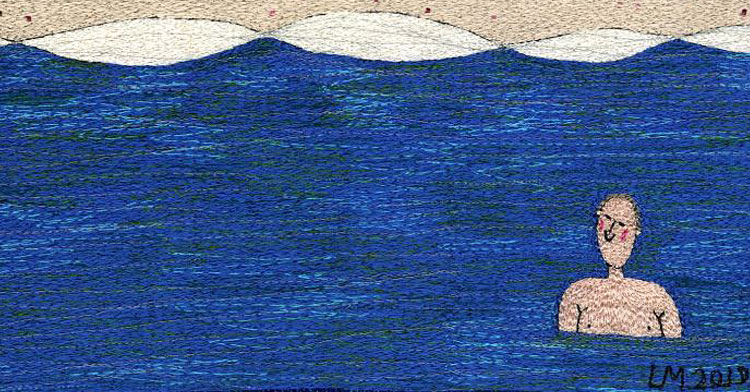
Comments